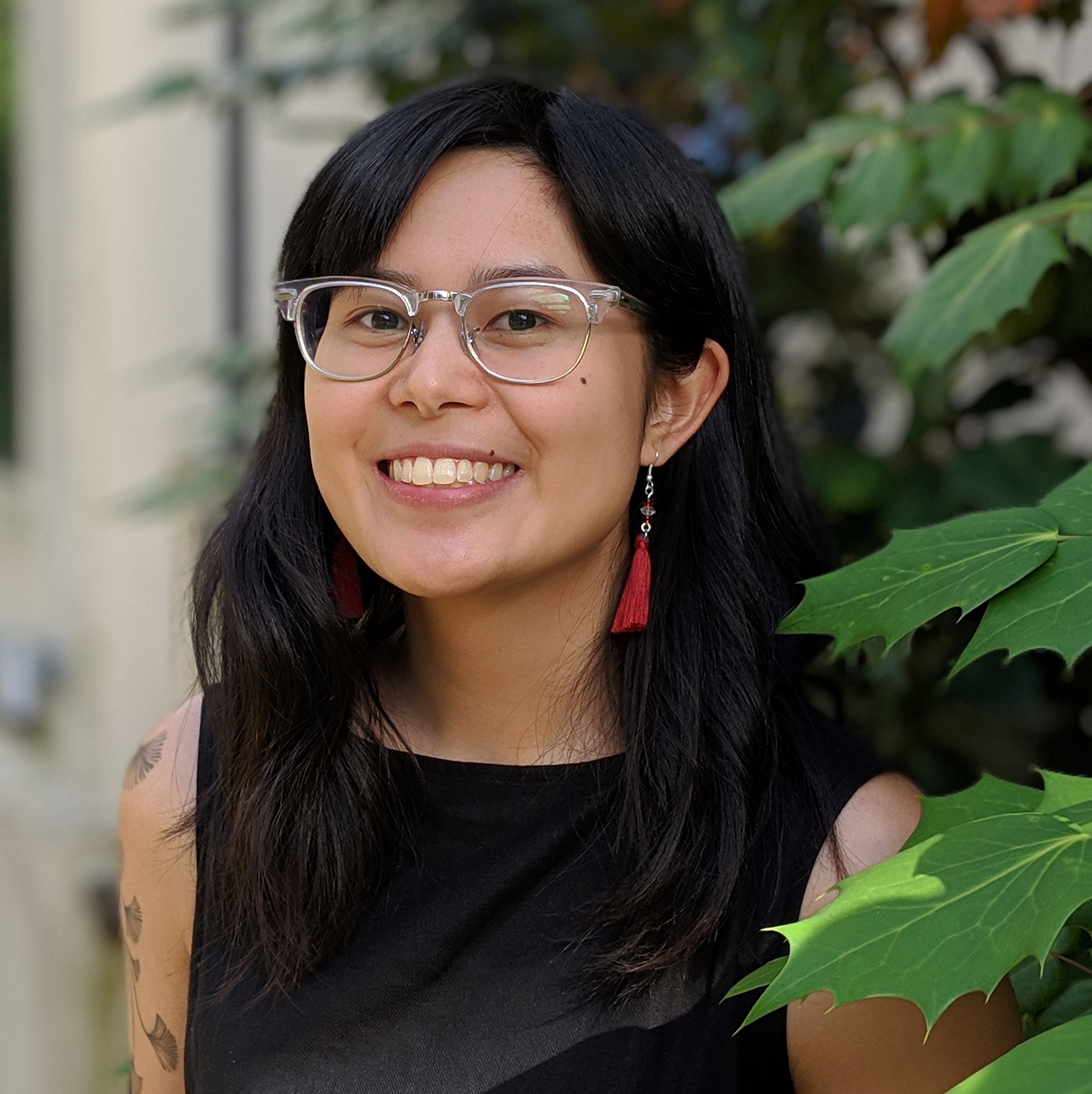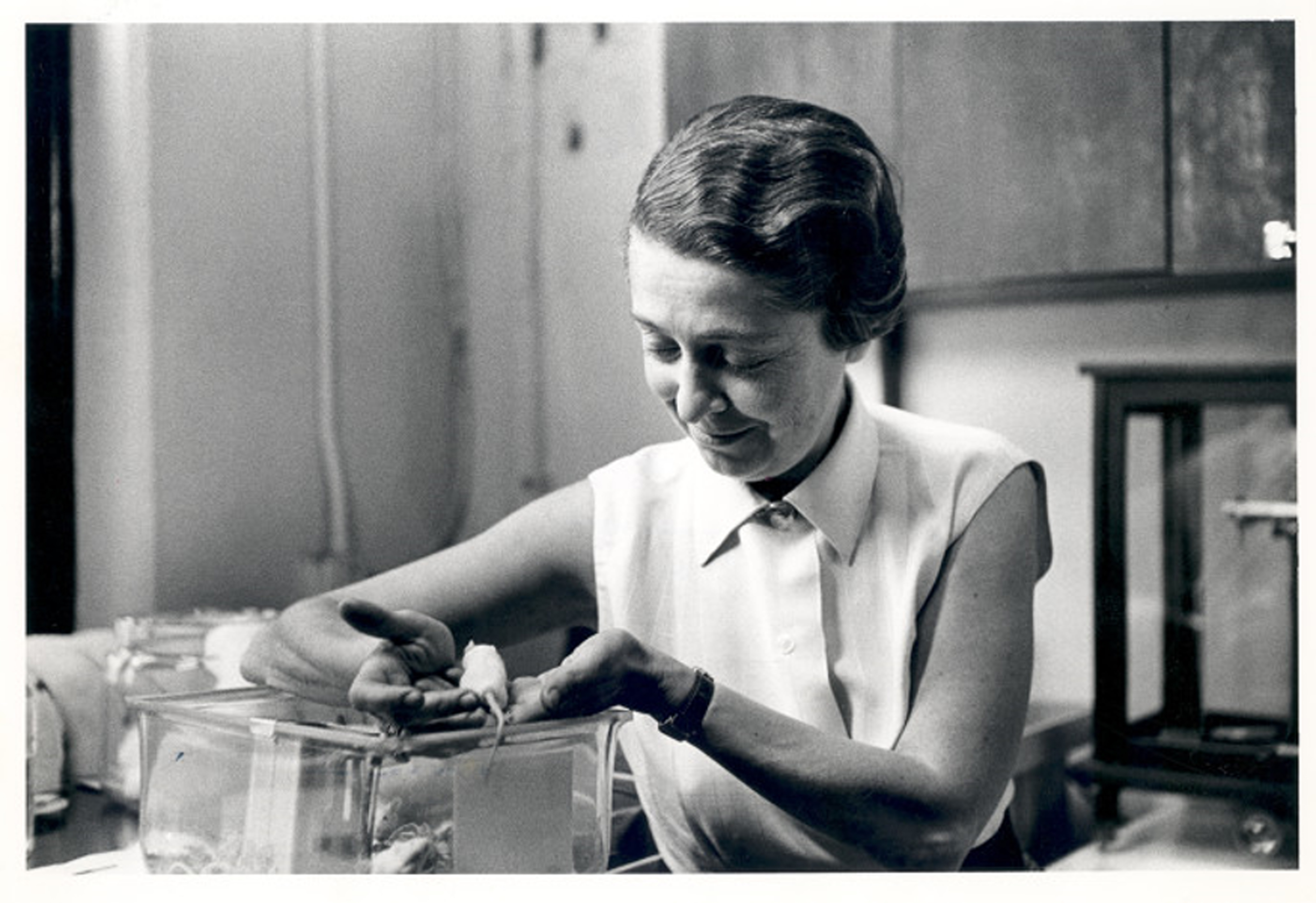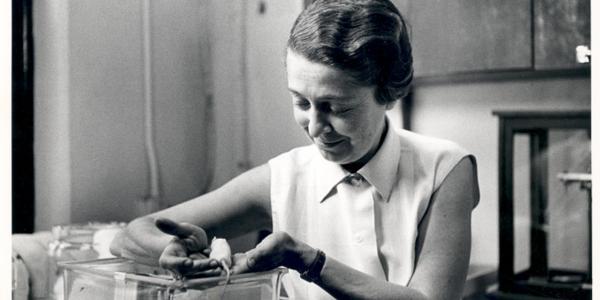EEPB Grad student Mahal Bugay talks about her experience with Project Biodiversify

Representation in science matters. And that is why one group aims to increase the visibility of role models from underrepresented groups in biology courses. Project Biodiversify is creating a repository of teaching materials that enhance human diversity and inclusivity in biology courses while also humanizing biology to students who may aspire to be biologists.
After Project Biodiversify presented a workshop at WashU, the biology department, inspired by their mission, got involved. Together with support from science writer Marta Wegorzewska, graduate student Mahal Bugay submitted a profile of Rita Levi-Montalcini, a former WashU faculty member.
Bugay is an Evolution, Ecology & Population Biology graduate student working in Rachel Penczykowski’s lab. She grew up in the southeastern US, mainly Georgia. Her interest in ecology began at home. Both parents are avid gardeners, providing her first taste of being outside, enjoying and working with plants.
Now as an ecologist working towards her doctorate, Bugay works on multiple projects in the Penczykowski Lab. One project involves sampling soil from sites along an urbanization gradient spanning from urban sites in the city of St. Louis to rural sites including Shaw Nature Reserve. The goal is to determine how soil chemistry (including heavy metals like lead) and communities of bacteria and fungi in the soil differ between urban, suburban, and rural areas.
Alongside gaining research experience, Bugay aims to complete WashU’s Science Communication Credential certificate program. Collaborating with the biology department on Project Biodiversify’s effort was the perfect opportunity to hone her science communication skills as part of the certificate requirements. She chose to submit a profile on Nobel prize-winning neuroscientist Rita Levi-Montalcini, who discovered nerve growth factor with Dr. Stanley Cohen, also of WashU.
“When I look back at her biography, I am reminded that science can be done anywhere. It doesn’t have to be in a lab. She did experiments in her family home. I think it’s a good message for young people. There’s a traditional, stereotypical view of science where it’s very formal and has to be elaborate, but simple things can still be science even without complex equipment,” said Bugay.
The submission asks for three slides about the scientist. The first slide asks: What’s their backstory? What led them to be a scientist? The second slide focuses on the model system they use in their research. The last slide summarizes one figure from their published work.

Bugay found plenty of information about Rita Levi-Montalcini through web searches, including Google, Wikipedia, WashU’s resources and the Nobel Prize website. She found it more difficult picking out a paper that she felt comfortable summarizing because Bugay is an ecologist and Levi-Montalcini was in a completely different field of neuroscience. She finally settled on one that she thought would be more digestible, considering the target audience is students.
“Picking a paper that isn’t too bogged down with jargon and heavy science methodology is a good starting point. I chose a shorter paper because I felt more comfortable with that. Even so, it was hard to narrow it down to the highlights,” Bugay explained.
When asked if anything stood out about Rita Levi-Montalcini’s time compared to the climate women in STEM face today, Bugay remarked that some things haven’t changed. The pressure on women to consider balance between family and work when deciding to join a scientific field is still there.
“Her father was very traditional and had a strict view of what women should and shouldn’t do. I can relate to that because women in STEM get asked questions that a lot of their male colleagues don’t, such as: Do you want children? How can you balance both career and family?
“This pressure comes from the academic world and within my own family. I’m only 24 and don’t plan to have kids anytime soon, but it weighs in the back of my mind when I interact with family who have that expectation for me. Because I am so focused on my career, it always feels like a balancing act is put on me even though I never asked for it,” Bugay added.
Learn more about all of the things Project Biodiversify has to offer here.





